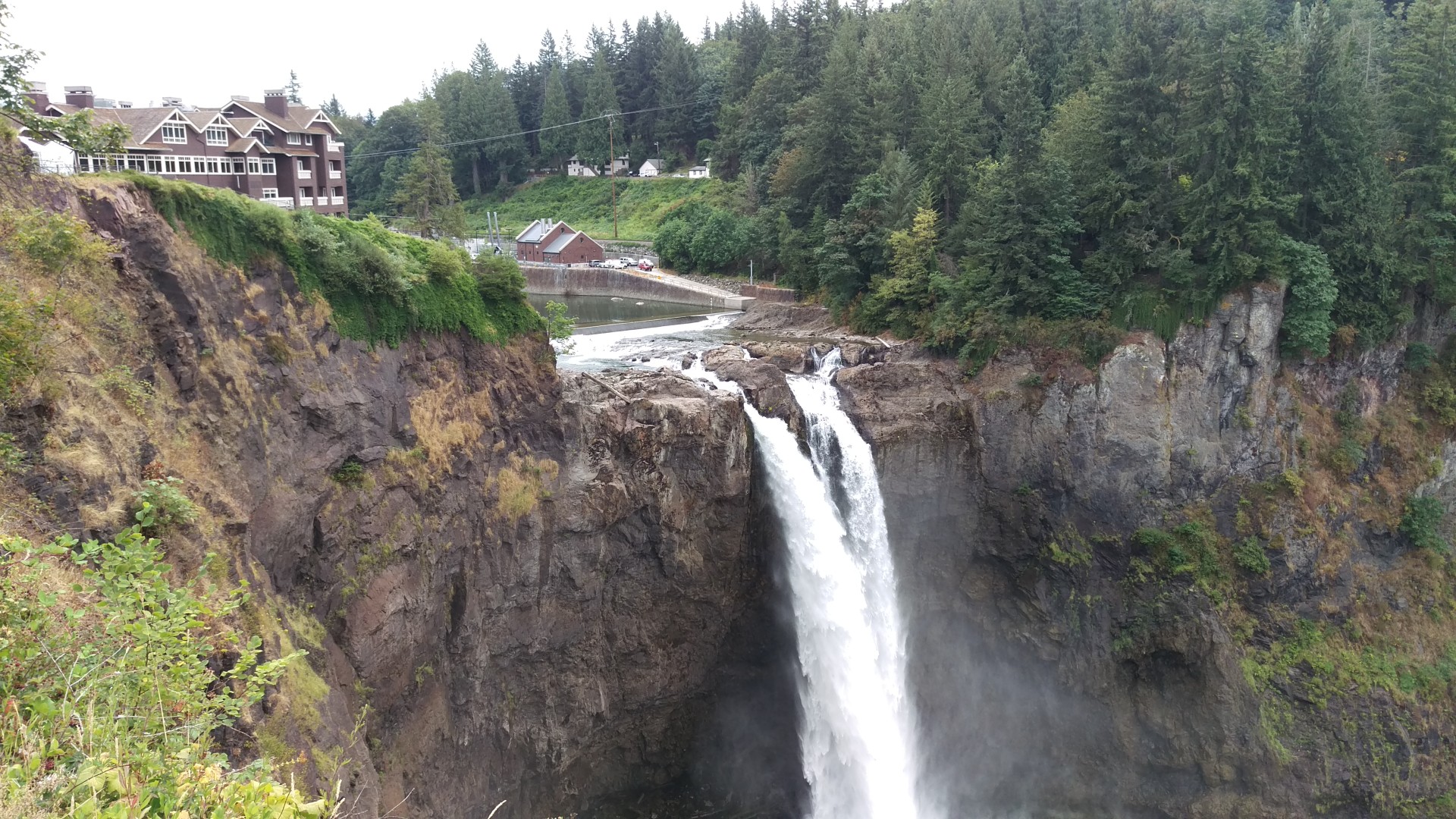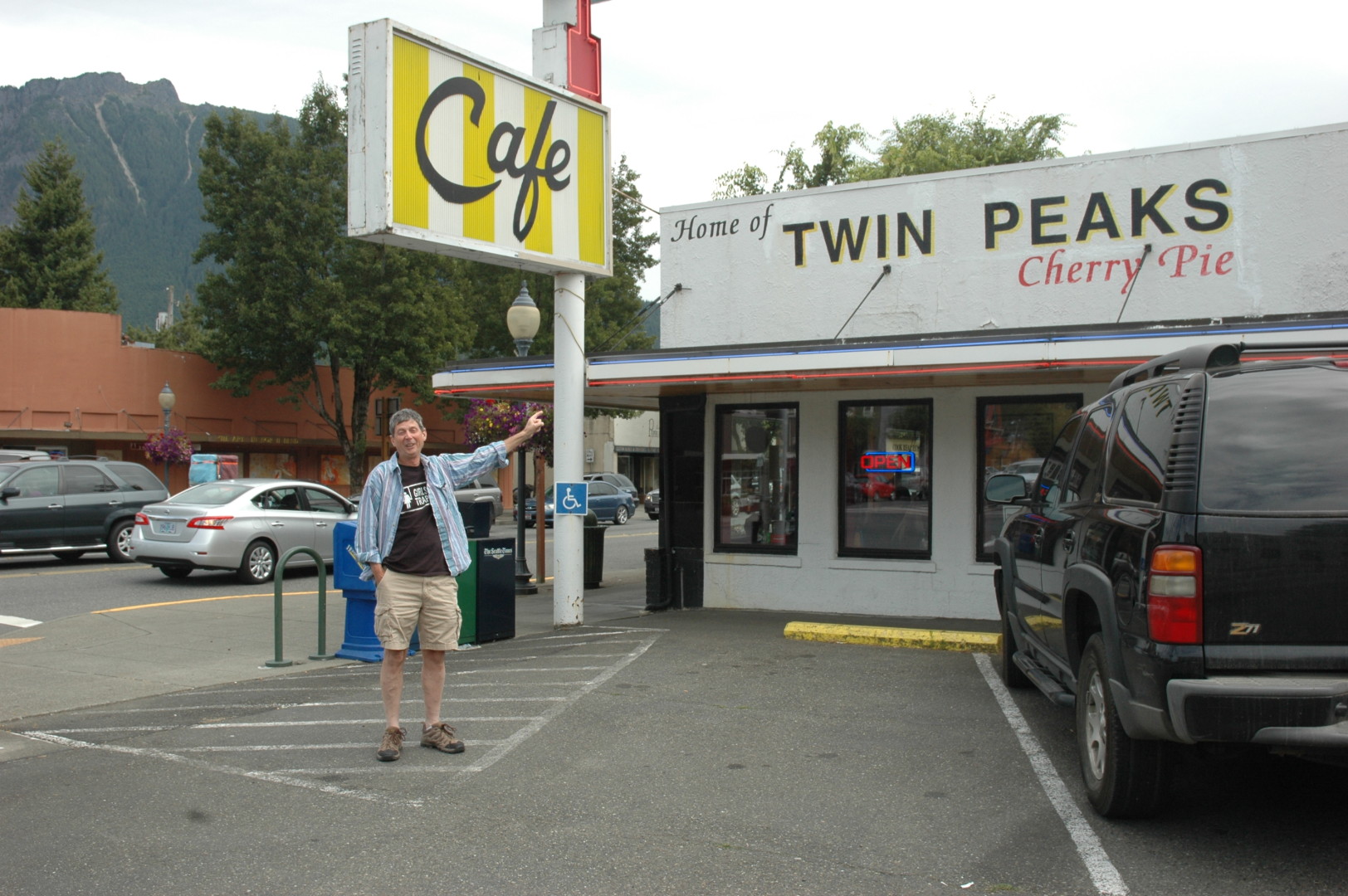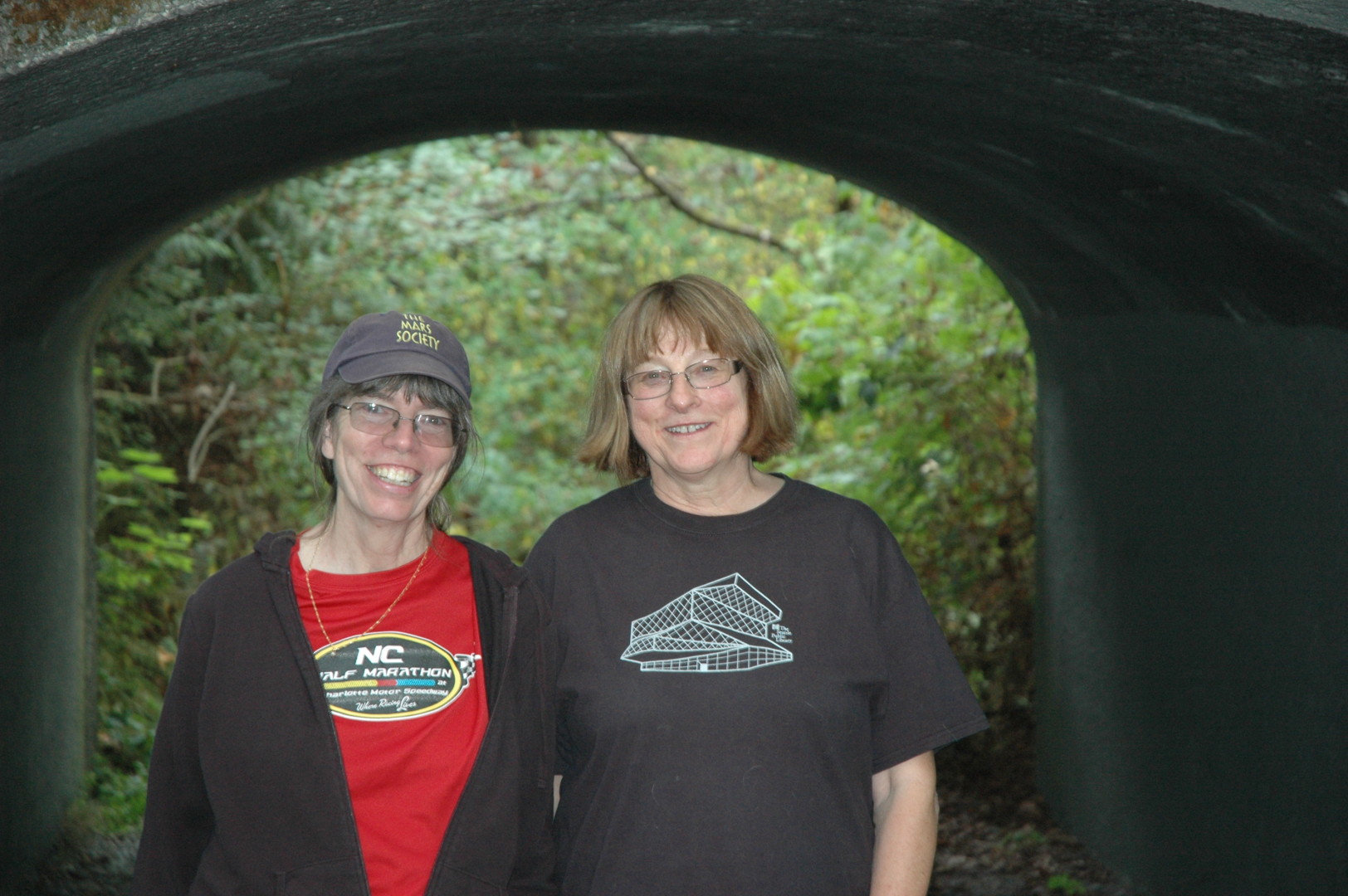Leaving Ontario, the chief delight for scenery on the road was the windmill farms. They stood on the ridges, sometimes in sentinel solitude, sometimes in rows, sometimes in various sizes, tall medium and small, like those sticker families you see pasted on the rear windows of minivans, depicting the families inside. Wind power is the most pragmatically practical you could ask for; the winged machines that gather it are elegantly beautiful, and yet it amazes me that many people protest that wind farms are a blight on the land and sea-scape. People ought to realize how many smokestacks and gutted coal mountains those whirly-gigs replace.
 We did take a sidetrip to North Bend to see the falls, and take snapshots of ourselves outside the “Twin Peaks” diner. Alas, the place was mobbed, and seemed to be functioning with a single waitress and no busboys. It seemed unfair to burden the poor woman with yet two more plates of cherry pie to fetch, so we skipped the pie, and drove on.
We did take a sidetrip to North Bend to see the falls, and take snapshots of ourselves outside the “Twin Peaks” diner. Alas, the place was mobbed, and seemed to be functioning with a single waitress and no busboys. It seemed unfair to burden the poor woman with yet two more plates of cherry pie to fetch, so we skipped the pie, and drove on.
Seattle’s traffic rivals D.C. Now, about Kendra:
Kendra is our friend in Seattle. She’s been a teacher and a librarian all her life, until retiring just this past summer. She was the first friend I made in Houston, Texas, when I arrived there fresh from my air force stint. She was an important part of the story of Ann and I becoming Us. And we hadn’t seen her for something like twenty years. Long story short, friendships like that rekindle instantly. Your kindred spirits will fall in with you, “get you” and “be gotten by you” in the blink of an eye, even after all those years. It was wonderful seeing her.
She has a friend, Dale, who was cleaning up after a yard sale that day, and invited us to pick anything that was left over to furnish our camper. We found towels, sheets, a pillow case and pillows, and even a spare blanket to feather our yet “unseen” nest for the Orcas stay. Dale was moving away from a home she’d lived in for more than twenty years, and clearly loved. She gave us a tour, talking about the place; the fireplace insert, and garden plants. She had herself dug out a huge pond, almost four feet deep, lined it and fashioned a water course with a circulating pump to aerate the water, and all for the purpose of helping to reestablish frog populations.She had grown up in the same neighborhood, and noted how the frogs she’d remembered were vanishing. The frogs had been dying off from pesticide use and other pollutants. They are an indicator species, canaries in the coal mine of our environment, which provide an early warning when the toxicity is rising. With its lily pads, ferns, flowering water plants, and wriggling tadpoles, it was the most beautiful pond you could ask for.
Dale is hoping the new owners will take care of her pond. Me, too…